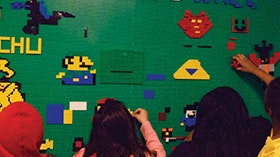Homepage
•
Learning Library
•
Blog
•
Epic LEGO wall allows anytime tinkering
Expand breadcrumbs
Expand breadcrumbs
- Learning Library
- Blog
- Epic LEGO wall allows anytime tinkering
- Homepage
- •
- Learning Library
- •
- Blog
- •
- Epic LEGO wall allows anytime tinkering
Epic LEGO wall allows anytime tinkering
By Nicole Krueger
June 14, 2017








